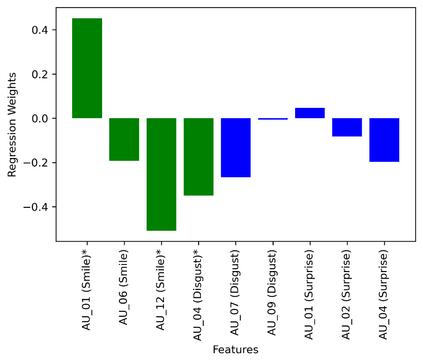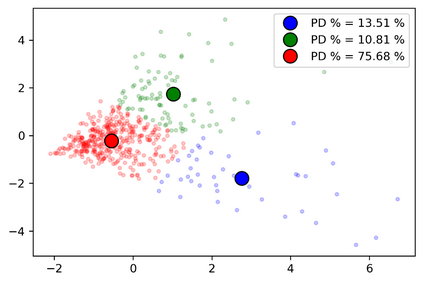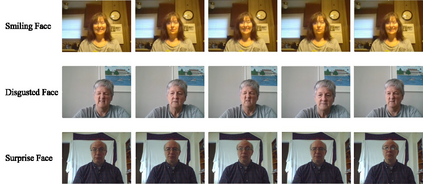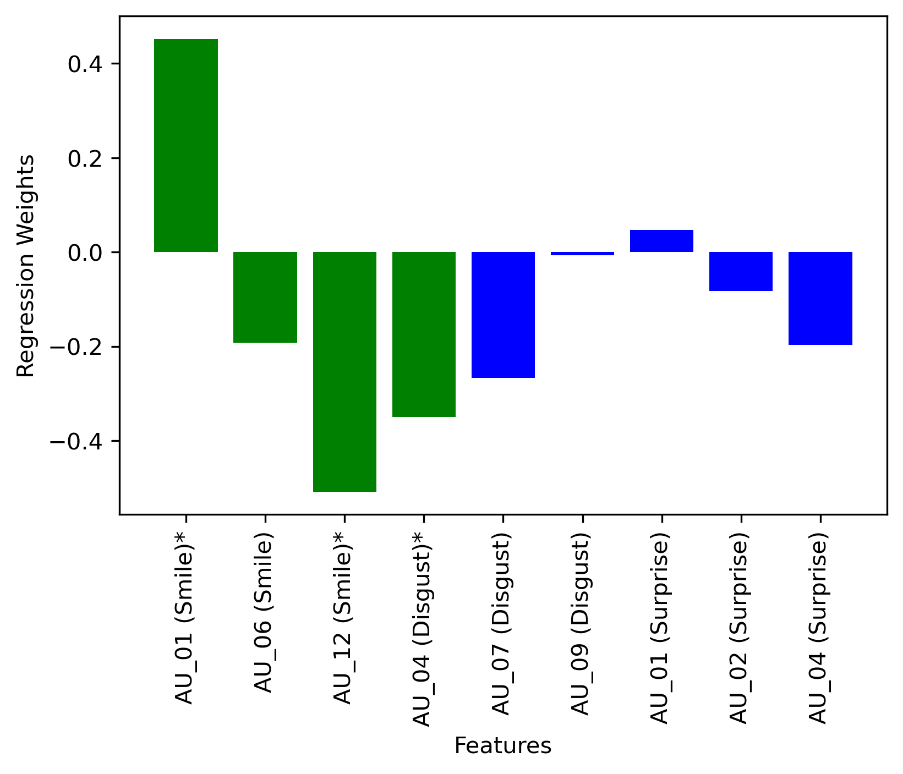One of the symptoms of Parkinson's disease (PD) is hypomimia or reduced facial expressions. In this paper, we present a digital biomarker for PD that utilizes the study of micro-expressions. We analyzed the facial action units (AU) from 1812 videos of 604 individuals (61 with PD and 543 without PD, mean age 63.9 yo, sd 7.8 ) collected online using a web-based tool (www.parktest.net). In these videos, participants were asked to make three facial expressions (a smiling, disgusted, and surprised face) followed by a neutral face. Using techniques from computer vision and machine learning, we objectively measured the variance of the facial muscle movements and used it to distinguish between individuals with and without PD. The prediction accuracy using the facial micro-expressions was comparable to those methodologies that utilize motor symptoms. Logistic regression analysis revealed that participants with PD had less variance in AU6 (cheek raiser), AU12 (lip corner puller), and AU4 (brow lowerer) than non-PD individuals. An automated classifier using Support Vector Machine was trained on the variances and achieved 95.6% accuracy. Using facial expressions as a biomarker for PD could be potentially transformative for patients in need of physical separation (e.g., due to COVID) or are immobile.
翻译:Parkinson病(PD)症状之一是低米或减少面部表情。在本文中,我们为PD展示了一个数字生物标志,该标志利用微表情的研究。我们分析了1812年604个人(61个PD和543个没有PD,平均年龄63.9 yo, sd 7.8)的面部行动单元(AU)的1812视频(AU),从1812视频中分析了使用网络工具(www.parkestest.net)收集的604个人(61个PD和543个没有PD,平均年龄63.9 yo, sd 7.8)的面部病症状。在这些视频中,要求参与者制作三种面部表(微笑、厌恶和惊讶的脸),然后用中立的脸部图像和机器学习技术,我们客观地测量了面部肌肉运动的差异。使用面部显像显像的预测准确度与使用运动症状的方法相似。 逻辑回归分析显示,PD参与者在AU6 (cheek higher) 、A12 (滑角角角拉车) 和 AU4 (row brow lower) 比非PI4 (b) 个人更低个人。使用支持VID 机进行自动剖分解分析,可能使用PM 需要95.6。







